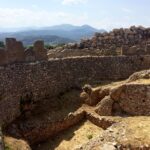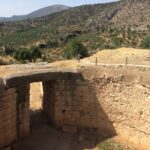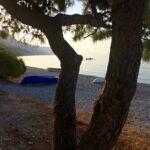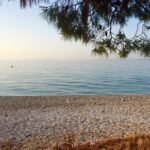Considered one of the greatest civilizations of Greek prehistory, Mycenae traces back to the Neolithic period, though the handful of ruins that remain today date from 1350-1200 B.C. when the site was at its most prominent. Grave circles containing rich gifts and offerings suggest the archeological site was once a land where aristocrats and rulers thrived, and discoveries from later funerary sites show that the Mycenaean heavily invested in trade with other Mediterranean civilizations. At the height of Mycenaean civilization, a palace, a fortification wall including the Lion Gate, grave circles, a giant treasury, and a notable well were erected, and these ruins are what we see as Mycenae today.
Although Mycenae was underwhelming compared to Ancient Delphi and the Acropolis at Athens, we had no regrets making the short drive from Athens to Mycenae (~90 km) due to the stops we made on the way there and back. We felt the entry fee of €12 each was a bit steep considering how insignificant the entire site was, but at least our short visit gave us more time to explore other areas on the Peloponnese.
During the drive, the Corinth Canal delightedly surprised us. We had seen postcards of this incredible manmade site—an approximately 5 km canal dug out through the skinniest section of the Peloponnese peninsula, connecting the Bay of Corinth with the Aegean Sea. After crossing the tiny 50-meter bridge that gave us a brief glimpse of the canal, we immediately pulled over into a giant parking lot on the other side, parked, and eagerly made our way back to the bridge to snap a few photos. We even lucked out with several sailing boats cruising through the canal.
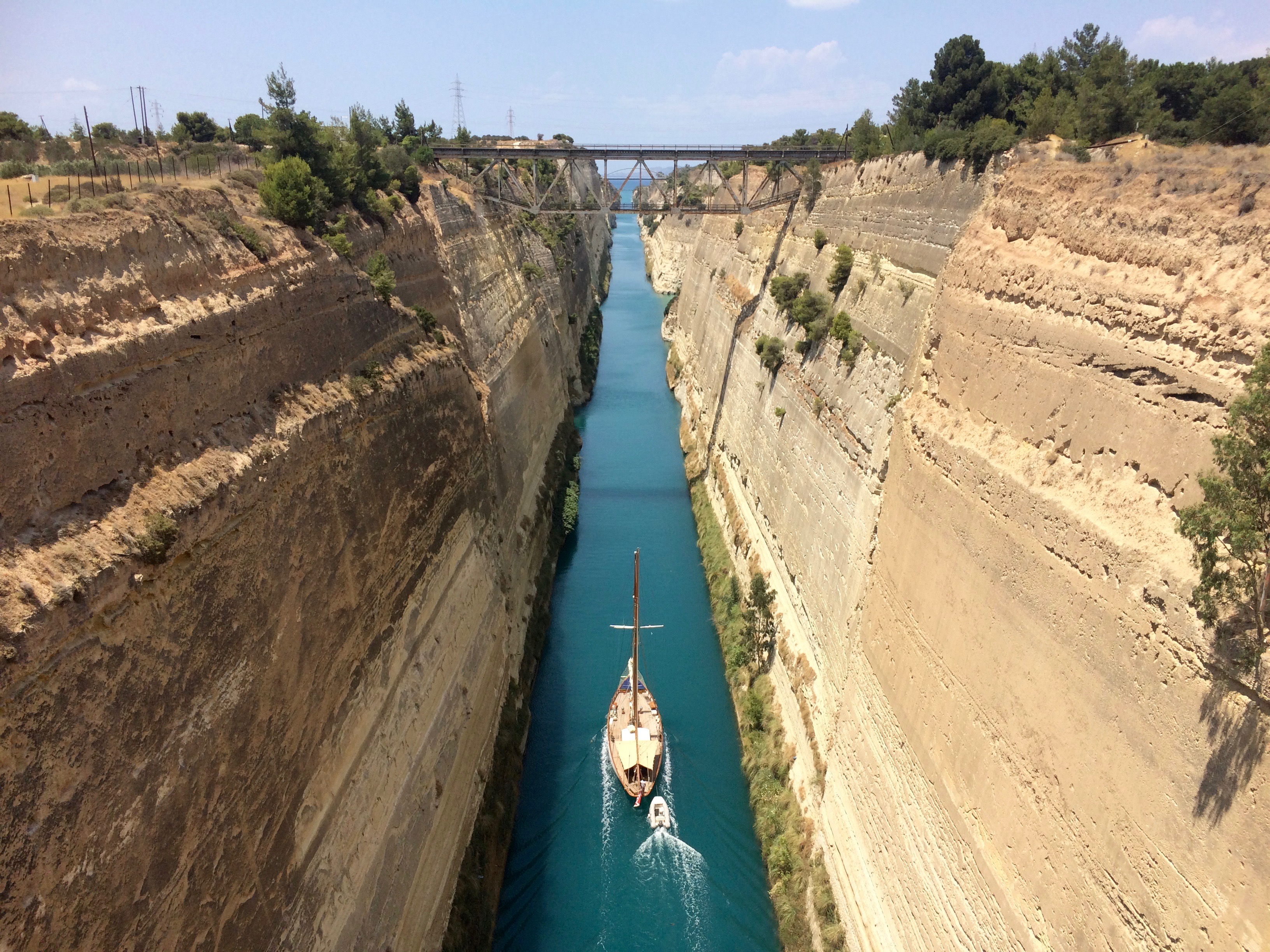
Then we continued to the hilltop Mycenae.
Perhaps Mycenae’s most revered site of significance is the well-preserved Lion Gate, which is the grand entrance to the ruins:
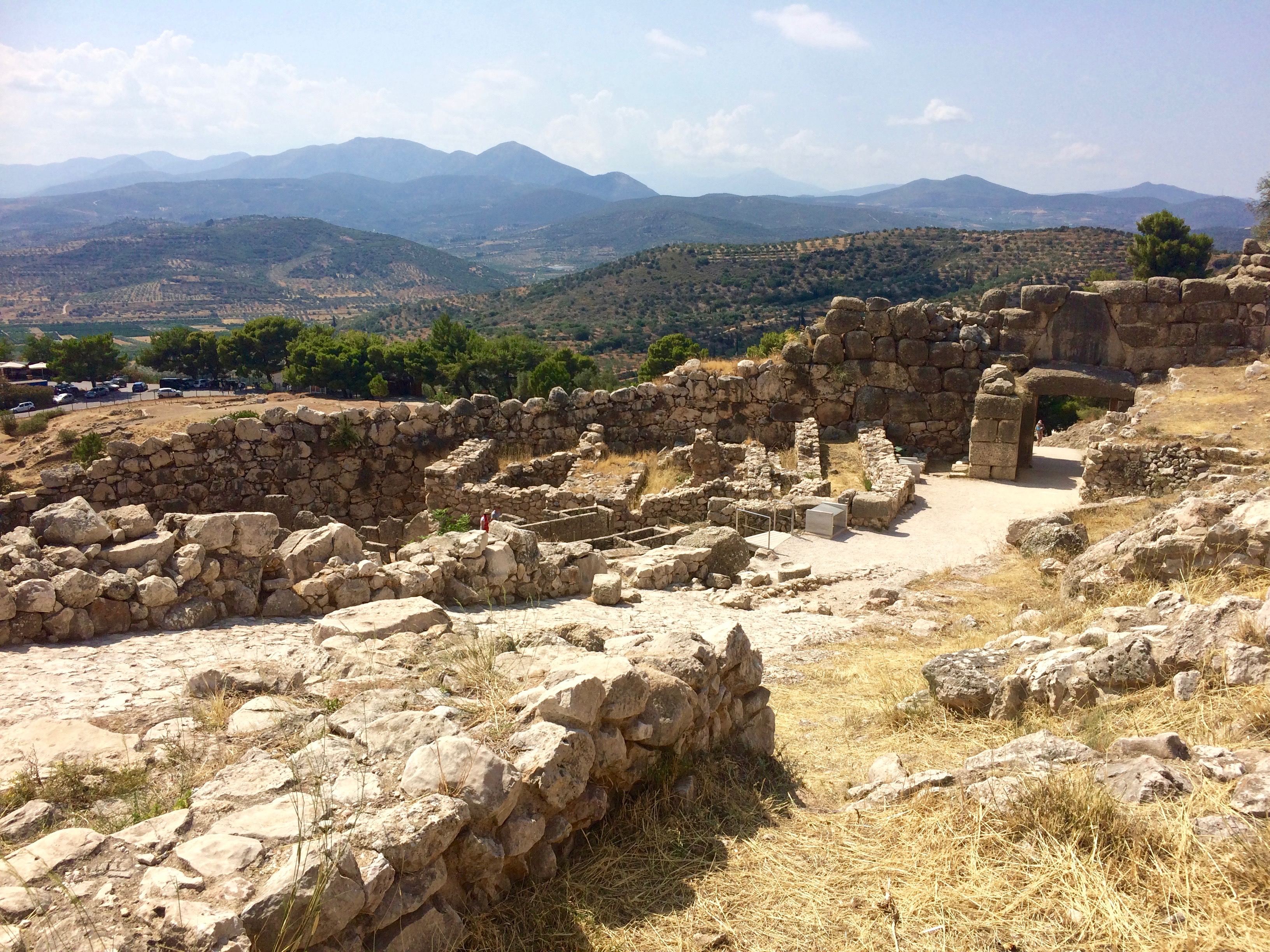
The grave circles where rich artifacts (grave gifts) were discovered:
The passageway leading down into the cistern: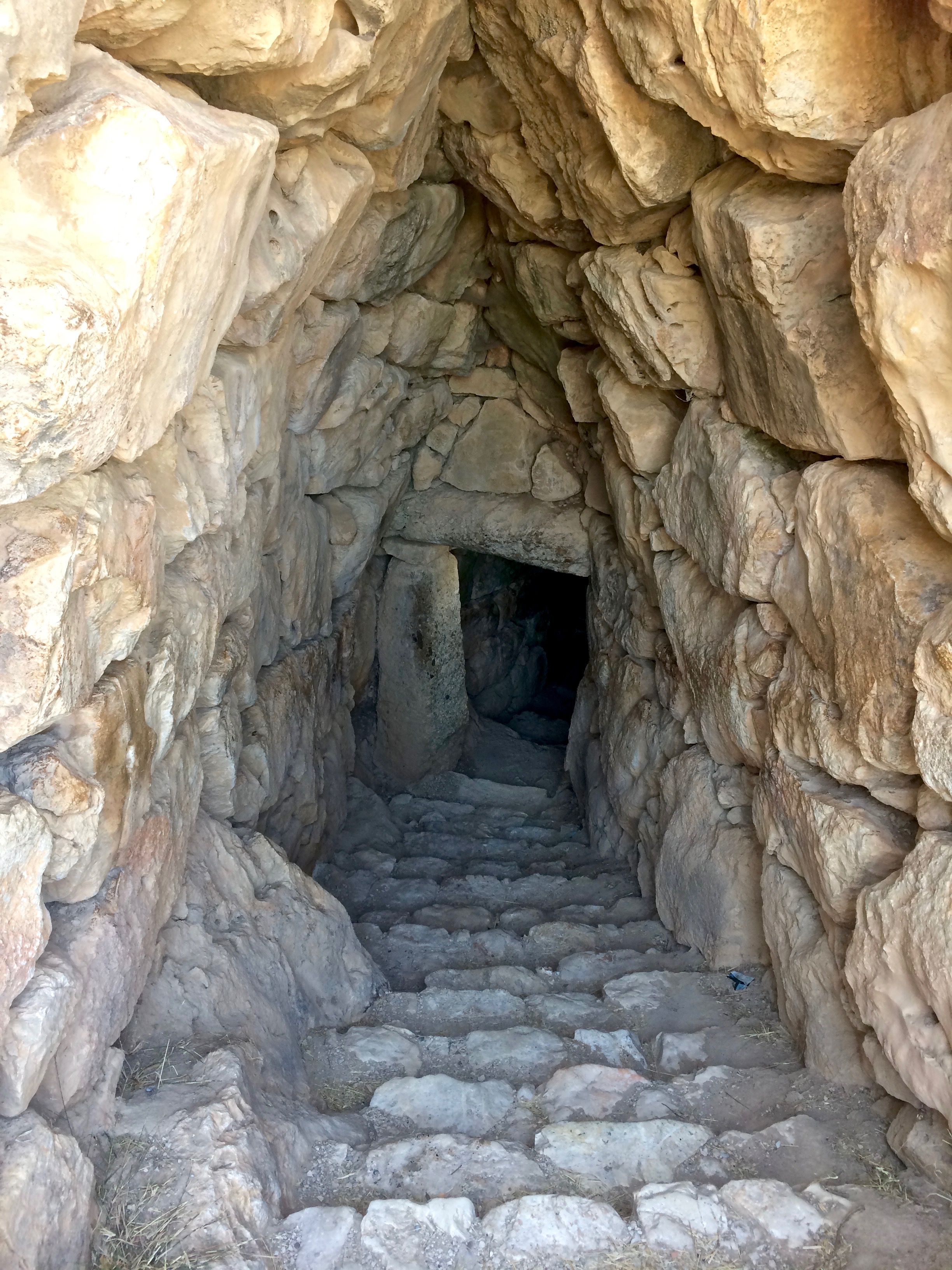
The impressive beehive vault of the Treasury of Atreus: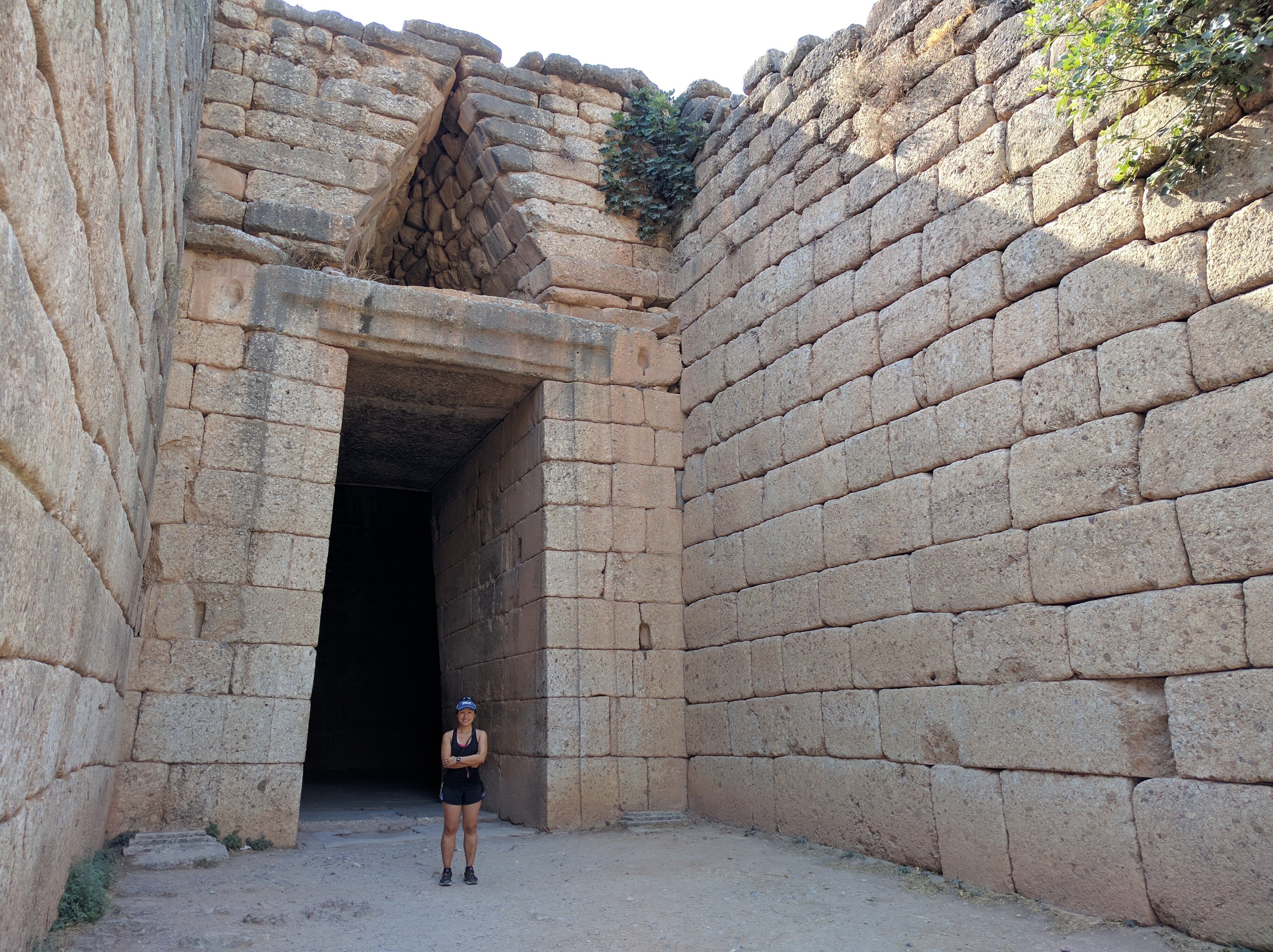
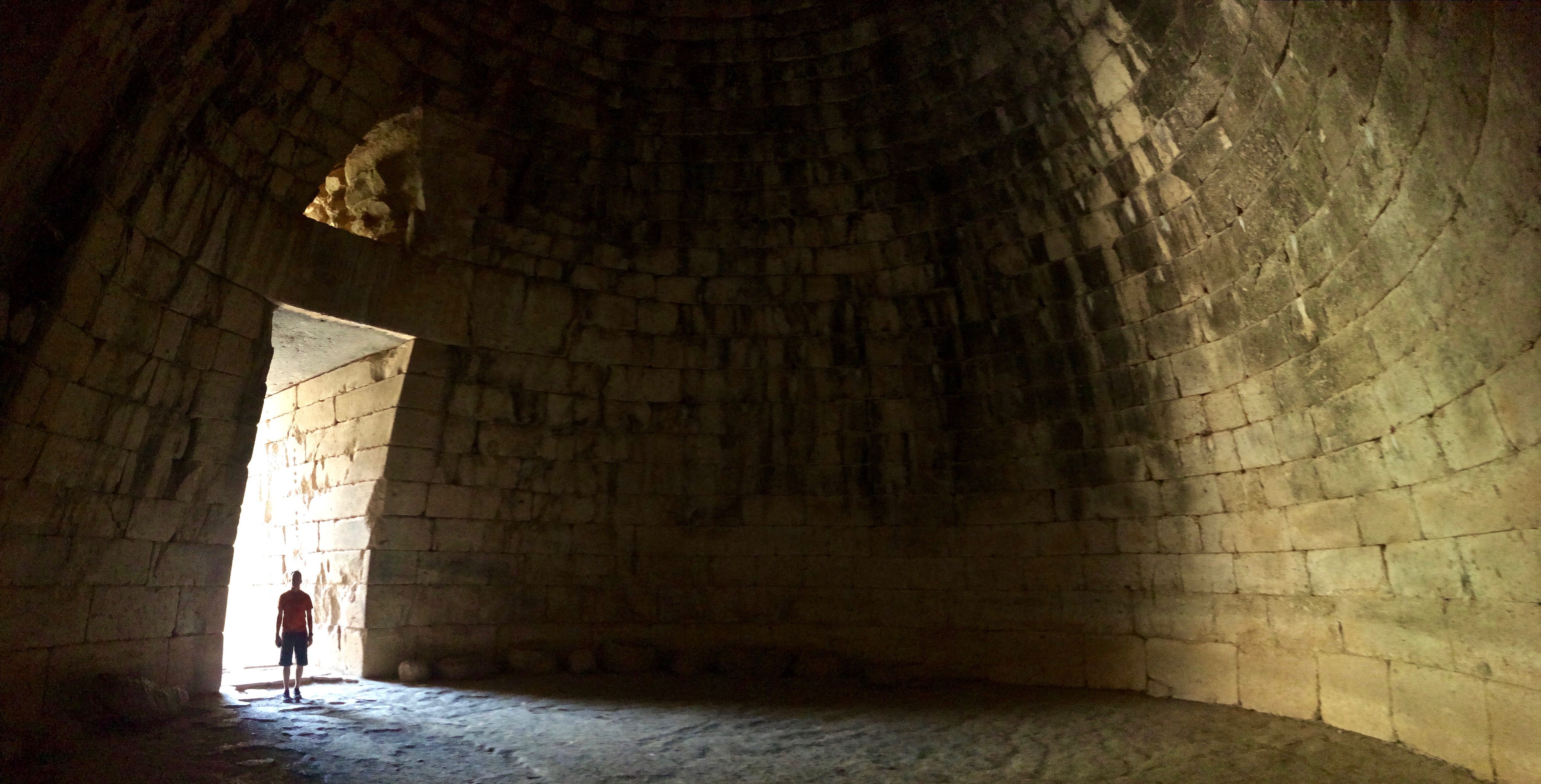
Aside from these sites, every other structure including the palace was literally in ruins and overgrown shrubs. Even the accompanying signboards were hardly enlightening. We left the archeological site feeling uninspired, but happily ended our day with Kineta Beach.
We had driven past a crowded Kineta Beach on our way to Mycenae, but when we returned at sundown, the crowds had already begun to thin out. Kineta Beach is a beautiful beach, clearly a hot weekend escape for the locals and their families. Amused stares definitely came our way when a white guy and Asian girl arrived and parked their fat German motorhome on the beach.
Once darkness filled the sky, all the locals left for home, and the restaurants closed up for the night. With the sea literally only a stone’s throw away from our door, we heard nothing but the waves gently rippling on the beach. I woke up at sunrise to these views from our window:
A lovely sunrise dip in the sea: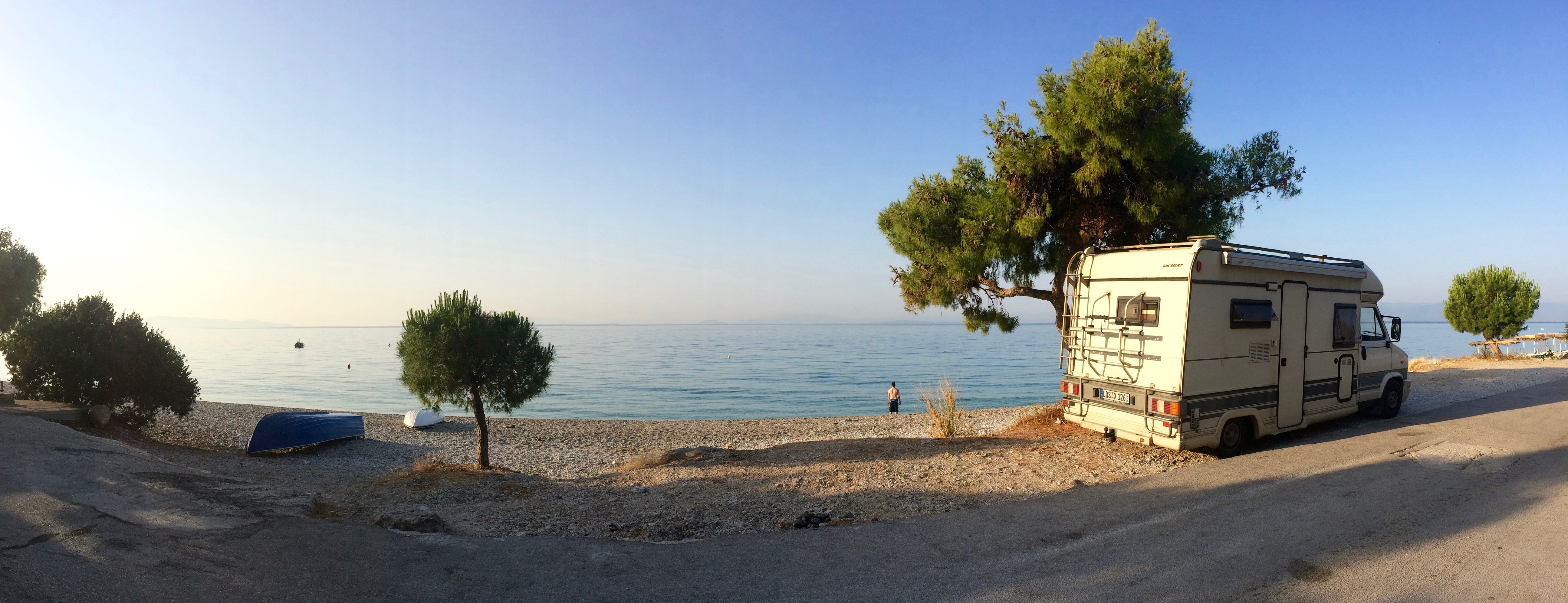
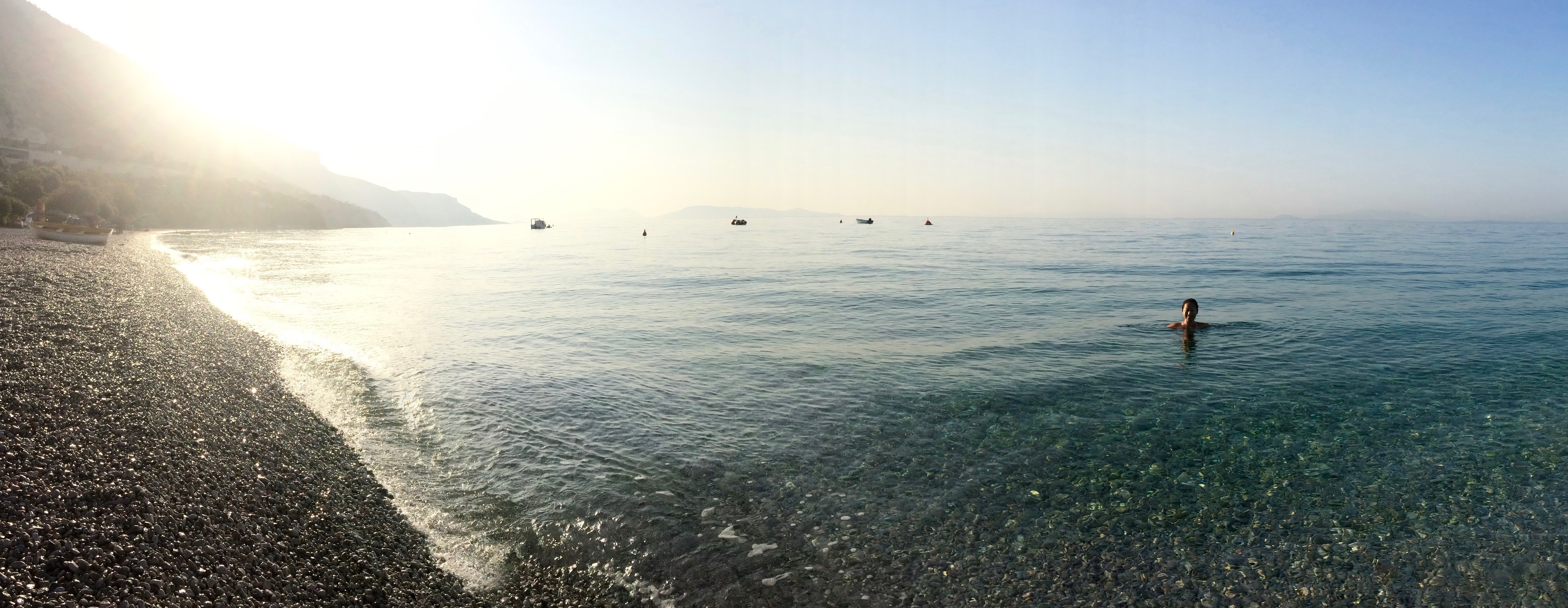
That morning concluded our quick trip to Mycenae, a very brief visit to the Peloponnese peninsula. Unfortunately we were running out of time on our European road trip, leaving us no time to explore the rest of the Peloponnese. A bit disappointing, but at least we had an entire Greek beach to ourselves! =)

